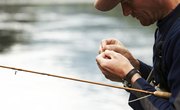
Anglers have many options available to them when fishing for trout. The baits used to catch trout range anywhere from live bait such as night crawlers to commercially sold dough baits. The use of scent attractants to lure trout can be extremely effective when deployed in various situations. Trout enthusiasts have classified trout baits into three categories: human food, trout dough bait and live bait. You can literally attach three categories of baits to a treble hook and lure a trout to your hook.
Human Food

stevanovicigor/iStock/Getty Images
Human foods are great attachments in getting trout to strike. Northern anglers who pursue farm-raised rainbow trout often use Velveeta cheese, according to the Missouri Department of Conservation Online website. Velveeta comes in a solid 10-inch package. You can break off small pieces and roll them into tiny balls and put them on your hook. When cold, the cheese is able to hold on to the hook. However, in warm weather the cheese becomes soft and melts and is unable to stay on the hook. The smell of Velveeta lures fish into thinking the cheese is the same substances fed to them in hatcheries. Whole kernels of corn also are a great food to use to catch trout. The corn sweetness along with its color makes it appealing to trout. The sugar in marshmallows gives off a sweet smell that entices a trout to sample this treat. The miniature, 1-inch marshmallows sold in many grocery stores across the United States come in white and an assortment of colors.
Artificial Dough Bait
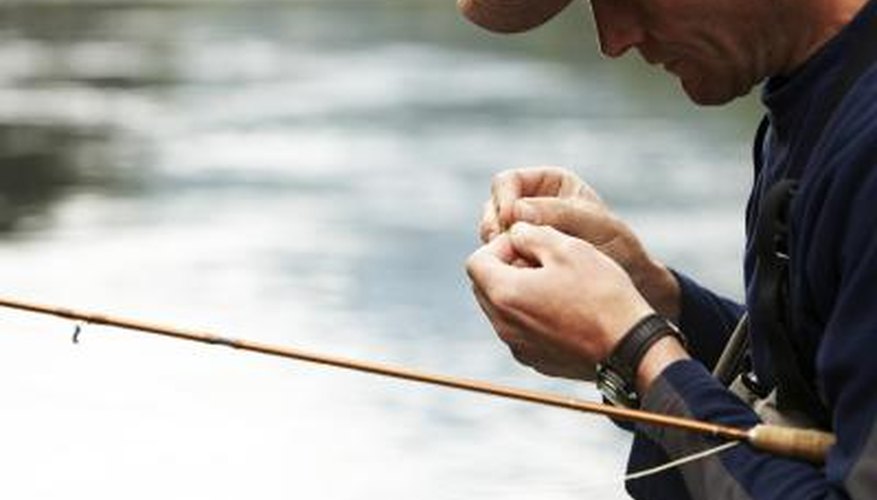
Thomas Northcut/Digital Vision/Getty Images
Scented artificial baits have become the fade when fishing for trout rather than using live bait, according to the website Trout Nation. Many streams have regulations prohibiting the use of live bait, so the proper selection of artificial baits becomes crucial. Berkley power bait is a manually factored dough substance that comes in a variety of flavors and colors. Normally, you would mold the dough bait with your fingers and place it on a single or treble hook. You would fish the bait either with a bobber or within tiny split-shot that keeps the bait weighted down while in the water. Additionally, Berkley makes small power nuggets that come in several flavors such as corn, cheese and garlic. Power nuggets closely match the scent and taste of the food that hatchery ate when raised in farm ponds. Berkley manufactures dough baits to resemble wax and earthworms. Berkeley workers have minced these creatures and placed them within the dough to give off a natural scent within the water. You would fish the dough baits just as you would a real wax worm or night crawler.
Live Bait
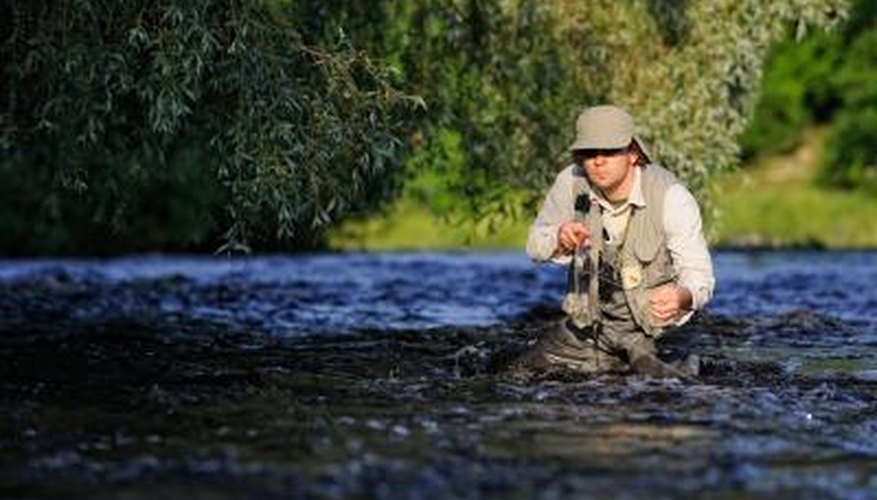
Timur Nisametdinov/iStock/Getty Images
Any natural bait is irresistible to a fish; creatures such as night crawlers give off strong scents when in the water. The mucus that coats a night crawler's body secretes a smell that fish can pick up. Along with their movement, night crawlers can induce a trout into gobbling it up. Minnows also have the ability to draw a fish to a location by their smell. When hooked, a minnow secretes body fluids such as blood and the protective mucus that covers their scales into the water. Minnows are good baits for brown trout, which can pick up their scent within the water, according to the Fish Resource website. Salmon eggs, sold commercially by tackle and bait retailers, give off smells that attract trout. Rainbow trout like salmon eggs as if they were tiny candy.
Using Power Bait to Catch Trout
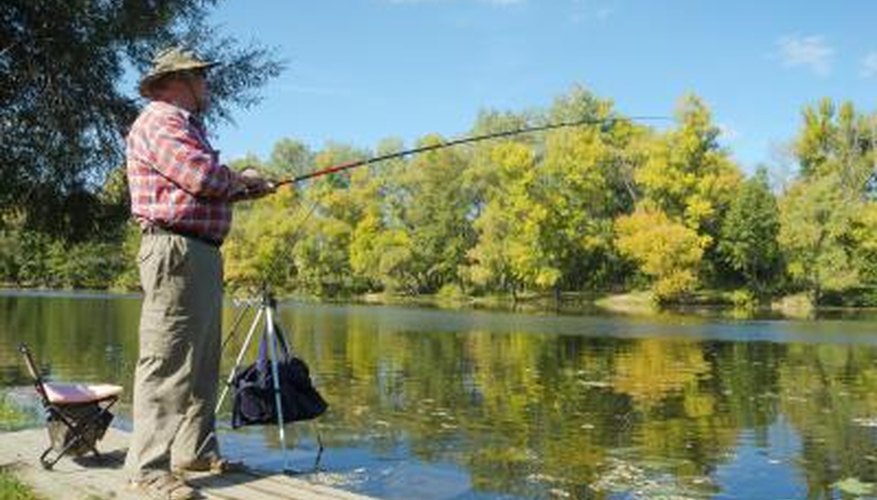
toxawww/iStock/Getty Images
Before going on a trout-fishing outing, stop by a local sporting goods store and purchase several containers of Berkeley power bait. Power bait comes in various colors including rainbow, white, orange and green. If the store sells packages of power bait earthworms, pick up a bag and take it along with you. When fishing power bait, dip you finger into the jar and remove a small sliver. Roll the power bait into a small ball within the palm of your hand. It should be around 1/2 to 1 inch to ½ inch. Run the hook through the dough and slightly mash down on the power bait to conceal the hook. Dip the bait into the water to seal any cracks, then cast your line to a good location.
Wild Trout versus Stocked Trout
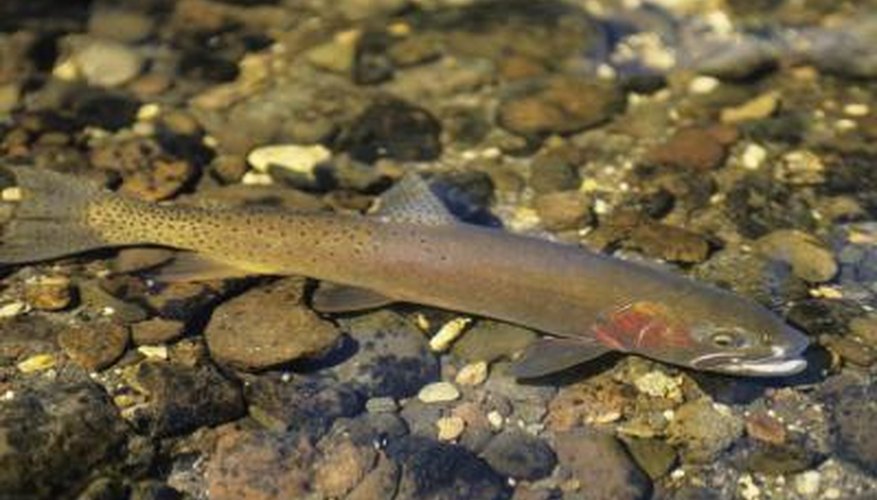
Karl Weatherly/Photodisc/Getty Images
Trout fishermen should realize that wild trout are more finicky and know the differences between live baits versus artificial. Farm-raised trout have no keen sense of smell, as they know only the artificial feed for all of their lives, according to the Trout Nation website. Anglers can cast just about anything that gives off a sweet aroma and a stocked trout will gobble it up.
Writer Bio
Thomas Ganio began writing in 2006 for the "Northern Virginia Daily," a community newspaper in Richmond, Va. As a freelance writer, he has also contributed to "The Maryland Springs Gazette" and the Parks and Recreation Department of Richmond County, Md. Ganio holds a Bachelor of Arts in social science and English from James Madison University.


